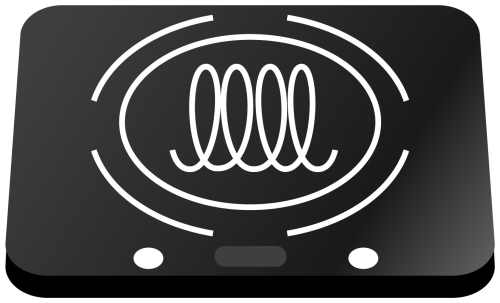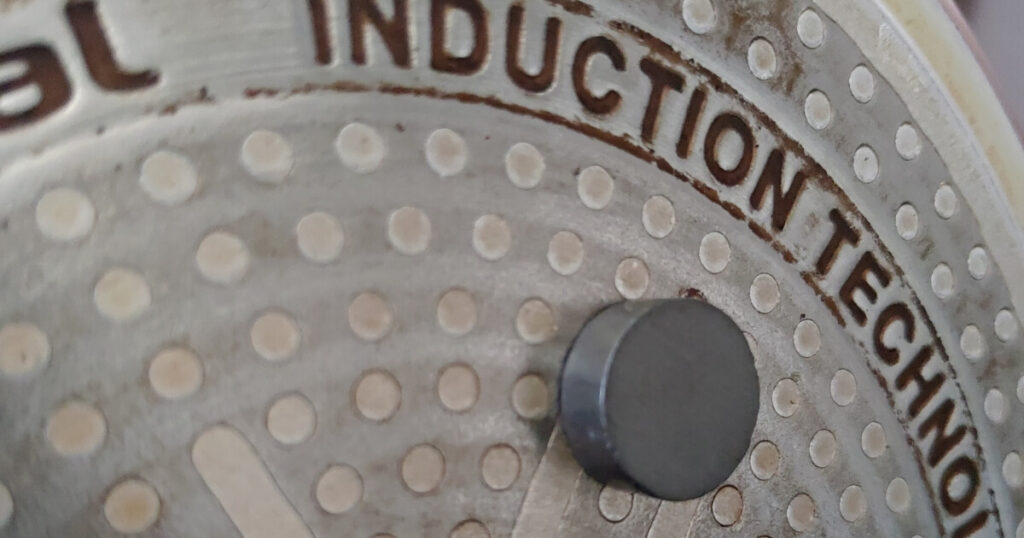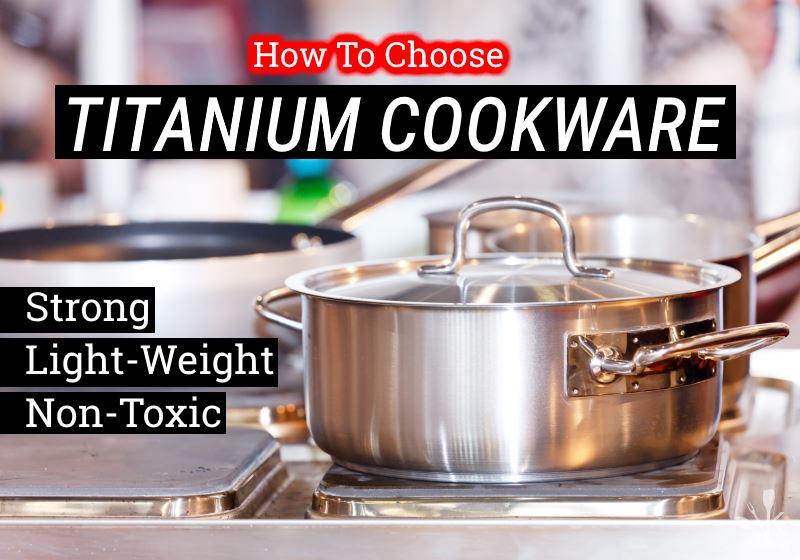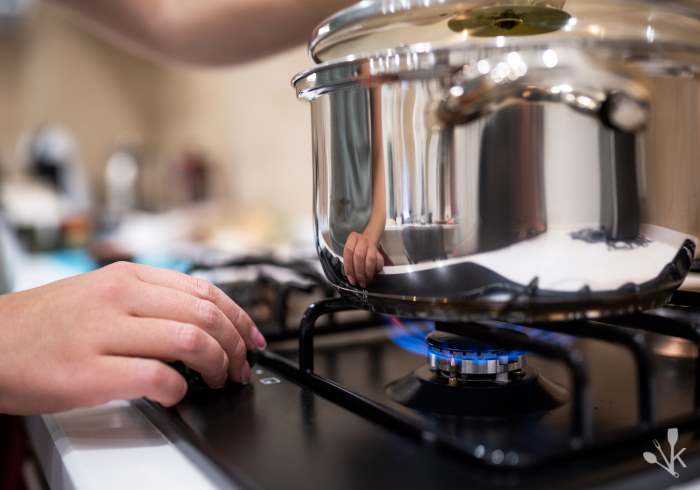Fortunately, induction compatible cookware is prolific, inexpensive, and easy to identify and test. To make sure your current cookware works before you buy, you will need to know the following.
How do you know if your cookware is induction compatible?

Your cookware should be marked with a symbol on the bottom. The symbol should resemble 4 loops of wire or indicated with the words induction ready. If it’s not marked, you can test to see if a magnet will stick to the bottom. If so, your pots and pans are ready for induction cooking.
The Induction Cookware Symbol
Some cookware is designed specifically for induction cooktops. If cookware was designed with induction cooking in mind, it would often be marked with a specific, induction-compatible symbol.

Induction compatibility is illustrated by four or more loops, with the appearance of coiled wire.
Sometimes, the symbol is printed alongside the word “induction” or “induktion” (in the case of some European cookware brands), but sometimes, it may appear alone.
Cookware with this symbol was designed for efficient induction cooking. However, that only means it was designed with a high enough ferrous (iron) content to sufficiently produce heat when used with an induction cooktop.
If you have a cast-iron skillet in your kitchen cupboard, then chances are, you already own at least one piece of induction-ready cookware.
Common Types Of Induction Cookware
Induction ready cookware is available in dozens of forms. Every piece you may need including nonstick pans, woks, Dutch ovens, stockpots, and more is commonly made by high-quality induction-ready cookware providers.
But because of materials already common in everyday cookware, you may already own pieces that are induction ready — whether or not they’re marked.
While purposefully induction-ready cookware is made with high iron content in mind and may have more iron-rich bases than traditional cookware, that isn’t always the case.
To start searching for induction-ready cookware you may already own, look for black pans, pots, and other pieces of cookware. These pieces tend to be high in ferrous or iron, content, and cast iron pieces, in particular, are greatly suited to induction cooking.
In addition to these pieces, you may also find that you already own stainless steel that can function on an induction cooktop.
Once you’ve rounded up the pieces you want to use, before using them on your induction cooktop, it’s time to put them to one very brief and conclusive test.
How To Test Your Cookware For Compatibility
How do you test for induction-ready cookware in your own home? How can you shop for it in thrift stores, or test whether you can save money buying a piece without the induction-ready symbol?

Bring a magnet! If a magnet will stick to your pots and pans, it’s induction ready! We used a simple refrigerator magnet for this test.
To test if a piece of cookware is compatible with your induction cooktop, simply:
- Place a magnet against the base of the cookware.
- Release the magnet, and observe whether it sticks.
That’s it. But if that fails, you’re in luck. You can purchase a converter disc to use your regular pots and pans. See our guide on how to use an induction converter disk.
For the science-savvy and curious, the explanation is fascinating and simple:
Electricity and magnetism interact. Electrical currents can create magnetic fields — this is what gives us electromagnets. At the same time, magnetic fields can be used to induce a current. The electrical current involved in induction cooking is generated by a magnetic field.
SEE ALSO: Induction vs Electric Cooktops
Therefore, to support the necessary current, induction-ready cookware needs only to be magnetic.
Specifically, cookware must be ferromagnetic, which is the type of magnetism we associate with the horseshoe-shaped magnets of cartoons and refrigerator magnets. If it reacts to any household magnet, it’s ferromagnetic.
Any ferromagnetic cookware or any cookware that responds to the simple magnet test contains enough iron content to support induction heating!
Is All Induction Cookware Made The Same?
Sadly, not quite. Though many pieces will stick to a magnet, you may find some pieces of cookware stick more strongly than others. In general, these pieces have higher iron content. Likewise, in general, pieces with higher iron content will heat more efficiently.
What this means is that any dish that passes the magnet test is capable of being used on an induction cooktop.
But if you’re noticing you can’t seem to experience that highly-acclaimed, quick-heating oomf associated with induction cooking, consider seeking out cast iron cookware or cookware specifically marked for induction.
In Summary
Induction cooking’s innovative heating method relies on iron-rich cookware. The higher the iron content in your cookware, in general, the more efficient its heating will be.
There can be something of a thrill in buying new and exciting technologies for your kitchen, and it’s true that specially marked induction-ready cookware is one efficient solution.
But don’t be afraid to test what you already own, because many of the tools you need, and highly efficient ones at that, may already be in your kitchen.











